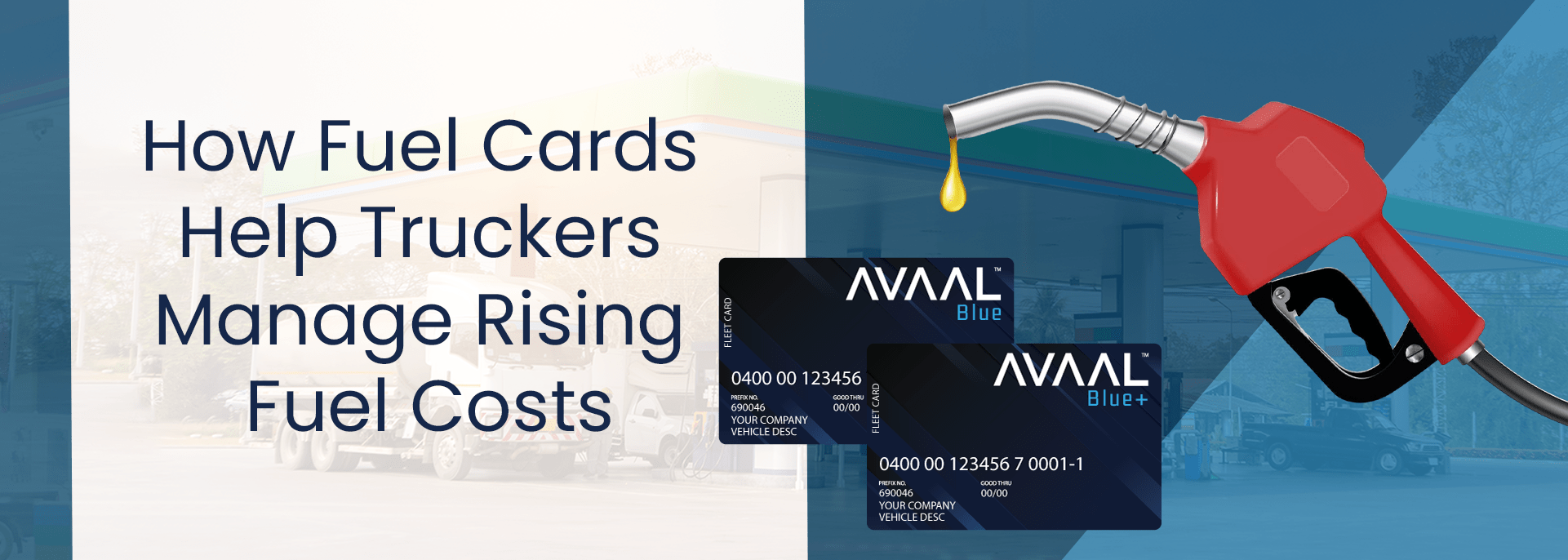How Fuel Cards Help Truckers Manage Rising Fuel Costs
In today’s volatile economy, fuel prices are consistently one of the most significant and unpredictable expenses for trucking companies and owner-operators. With costs rising due to global supply chain pressures, geopolitical tensions, and inflation, truckers are increasingly pressured to find cost-effective solutions to manage their bottom line. The fuel card is one of the most effective tools to combat fuel price fluctuations.
What Is a Fuel Card?
A fuel or fleet card is a payment card explicitly designed for fueling commercial vehicles. While similar in function to a credit or debit card, fuel cards offer added features tailored for the trucking and logistics industry. These include discounted fuel prices, real-time transaction tracking, spending controls, and detailed reporting.
Fuel cards can be used at partner fueling stations across Canada, the U.S., and beyond, depending on the network they are affiliated with.
1. Discounted Fuel Prices at the Pump
The most significant and immediate benefit of using a fuel card is discounted fuel prices.
How It Works:
Fuel card providers negotiate bulk fuel pricing with truck stop networks. Cardholders can save 5 to 40 cents per litre, depending on the location and card type. These savings add up quickly, especially for fleets that use multiple trucks daily.
Real-World Impact:
- A truck consuming 1,500 litres per week can save $75–$600 weekly, or $3,900–$31,200 annually, just by using a fuel card.
- Owner-operators with tight margins see immediate cash flow improvements.
2. Real-Time Expense Tracking
Rising fuel costs are not just about the price per litre—they are about knowing exactly where your money is going. With traditional receipts or cash, tracking fuel expenses becomes a manual nightmare. Fuel cards provide real-time data that helps truckers stay on top of fuel usage and detect unnecessary spending.
Key Features:
- Instant transaction alerts
- Detailed breakdowns by driver, route, or vehicle
- Online dashboards and mobile apps
This allows companies to spot fuel-wasting habits (like idling, inefficient routes, or unauthorized fill-ups) and make data-driven decisions to reduce fuel consumption.
3. Spending Controls and Limits
Fuel cards offer built-in spending controls that help manage how much is spent and what can be purchased. Trucking businesses can set daily, weekly, or monthly fuel limits per driver or vehicle.
Benefits of Fuel Spending Controls:
- Prevents over-fueling and fraud
- Eliminates non-fuel purchases (unless authorized)
- Ensures accountability among drivers
These restrictions help companies reduce operational leaks and increase efficiency during fuel inflation.
4. Better Cash Flow Management
Unlike credit cards, which may have high interest rates and delayed reporting, most fuel cards come with net payment terms (e.g., 7, 14, or 30 days). This means businesses can fill up now and pay later, helping manage cash flow more effectively.
This flexibility is crucial for trucking businesses that deal with delayed client payments, especially in freight and logistics, where payment cycles can stretch 30 to 90 days.
5. Integration with Accounting and Fleet Software
Managing rising costs is not just about reducing expenses—it is also about streamlining processes. Many modern fuel cards integrate with accounting platforms and fleet management software like:
- QuickBooks
- Fleetio
- Samsara
- Geotab
Benefits of Integration:
- Auto-categorization of fuel expenses
- Seamless IFTA (International Fuel Tax Agreement) reporting
- Accurate forecasting and budgeting
This reduces administrative workload, saves time, and improves visibility into your fuel-related financials.
6. Route Optimization Based on Fuel Prices
Some premium fuel card programs include fuel pricing maps and route planners, which help drivers plan their journeys and take advantage of the cheapest fuel stops along the way.
By planning fuel stops at discounted stations rather than random locations, drivers can optimize routes and save hundreds of dollars per trip.
For Example:
A cross-country trip from Toronto to Vancouver with strategic refuelling could save $200–$500, depending on the fuel card and station network used.
7. Fraud Protection and Security Features
Fuel fraud is a growing concern for fleet managers and owner-operators. Fake transactions, skimming, and unauthorized card use can inflate fuel expenses significantly. Fuel cards help mitigate these risks through:
- PIN-protected transactions
- Vehicle-specific cards
- Driver ID verification
- Real-time alerts for unusual activity
Truckers and fleet owners can reduce losses and better manage fuel expenditures with these security features.
8. Custom Reporting and Analytics
Fuel cards come with dashboards that generate custom reports, allowing fleet operators to identify the following:
- High-spending routes or drivers
- Trends in fuel consumption
- Seasonal cost fluctuations
Armed with this data, companies can adjust operational strategies—such as changing shift timings, consolidating deliveries, or reassigning routes—to curb fuel waste and mitigate rising costs.
9. Fleet Loyalty Rewards and Rebates
Many fuel card programs offer loyalty points, cashback rebates, or reward miles, further offsetting rising fuel prices. These perks might include
- Annual rebates based on total fuel spend
- Points redeemable for maintenance, accessories, or gift cards
- Exclusive access to truck stop amenities
While these rewards aren’t direct savings at the pump, they add significant value—especially for high-mileage fleets.
10. Nationwide and Cross-Border Coverage
For truckers driving across provinces or the U.S.-Canada border, fuel cards are accepted nationwide at thousands of partner locations. This consistency allows drivers to plan more efficiently without worrying about payment acceptance or finding affordable fuel stations.
Some top-tier cards even offer foreign exchange rate optimization, which reduces fuel costs on international hauls.
Who Should Use a Fuel Card?
Fuel cards benefit a wide range of industry players, including:
- Owner-operators looking to save on fuel and improve cash flow
- Small trucking companies want better visibility and control
- Large fleet operators managing dozens or hundreds of vehicles
- Freight brokers and logistics providers looking to streamline reporting
What to Look for in a Fuel Card Provider
To truly manage rising fuel costs, choosing the right provider is essential. Here are a few features to consider:
- Accepted locations: Ensure coverage matches your route map
- Fuel discounts: Look for competitive per-litre savings
- Fees: Watch for hidden admin or transaction fees
- Integration options: Choose a provider that works with your software
- Support: Look for 24/7 customer service and roadside assistance
Final Thoughts
As fuel prices continue to rise, trucking companies fuel card can not afford to ignore tools that offer both savings and operational efficiency. Fuel cards are no longer a luxury but a necessity for modern trucking operations. By leveraging discounts, real-time data, control features, and integrated reporting, truckers can regain control of their fuel budgets and run more profitable businesses. Contact us for information.


